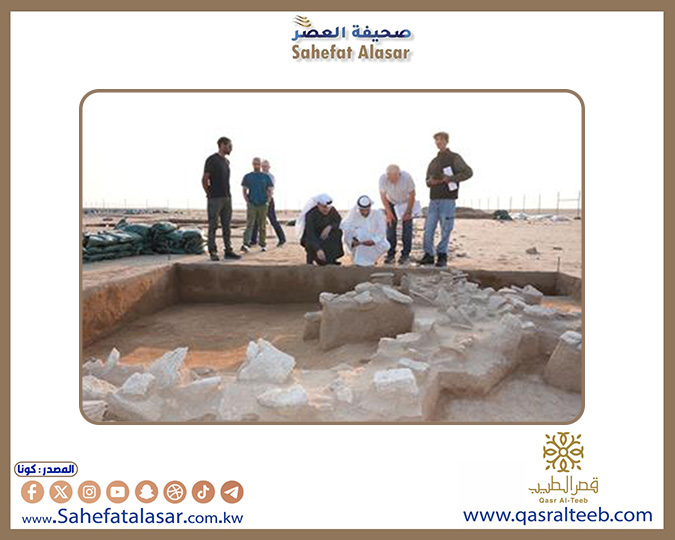


The National Council for Culture, Arts, and Letters announced today, Sunday, the discovery of an ancient water well on **Failaka Island**, dating back to the pre-Islamic period and the early Islamic era. The well is notable for its large size and the continuous flow of water from it.
The Acting Assistant Secretary-General for the Antiquities and Museums Sector at the Council, **Mohammed bin Redha**, told the Kuwait News Agency (**KUNA**) that the discovery was made within the courtyard of a large house dating back to the 7th and 8th centuries AD. Additionally, stone foundations of a building adjacent to the well were uncovered, along with evidence of a massive wall surrounding the courtyard, the house, and the well. Pottery remnants dating back 1,400 to 1,300 years, representing the pre-Islamic and early Islamic periods, were also found.
Bin Redha explained that this discovery is part of the excavation work carried out by the Kuwaiti-Slovak archaeological mission, which began in 2019 in the **Al-Qusur** area, one of the largest archaeological sites in the center of Failaka Island. The site dates back to multiple periods, from pre-Islamic times to the early and late Islamic eras.
For his part, **Dr. Hassan Ashkanani**, Professor of Archaeology and Anthropology at Kuwait University, described this discovery as one of the most significant archaeological finds on Failaka Island.
Dr. Ashkanani told **KUNA** that this discovery, which dates back to the Christian period and the early Islamic era, confirms the civilizational activity on the island at that time. He also revealed the discovery of more than 5 kilograms of precious stones, such as rubies and amethysts, reflecting the nature of economic activity on the island 1,400 years ago.
Meanwhile, the head of the Slovak mission, **Dr. Matej Ruttkay**, stated that the focus of the 2025 season will be on the northern part of the **Al-Qusur** settlement, where remnants of a courtyard and a house believed to have belonged to a wealthy individual from that era were previously found.
Ruttkay added to **KUNA** that the site spans 38 meters in length and 34 meters in width, with the house covering an area of 97 square meters. The discovered water well measures 4.5 meters in length and 4 meters in width, with an adjacent water channel.
It is worth noting that the **Al-Qusur** site is one of the most important and largest archaeological sites on Failaka Island, stretching two kilometers from east to west and extending approximately one kilometer inland to the south. Foundations of churches and numerous dwellings built of limestone and mud bricks have been discovered, along with gypsum materials, precious stones, and pottery dating back to various historical periods.
